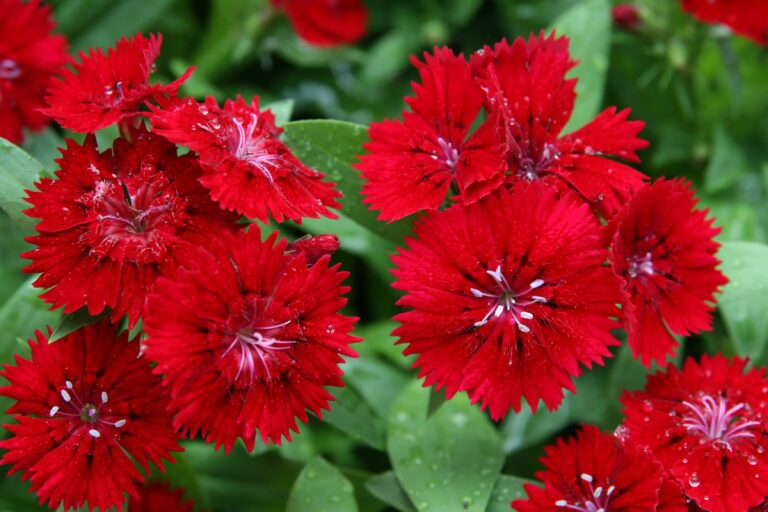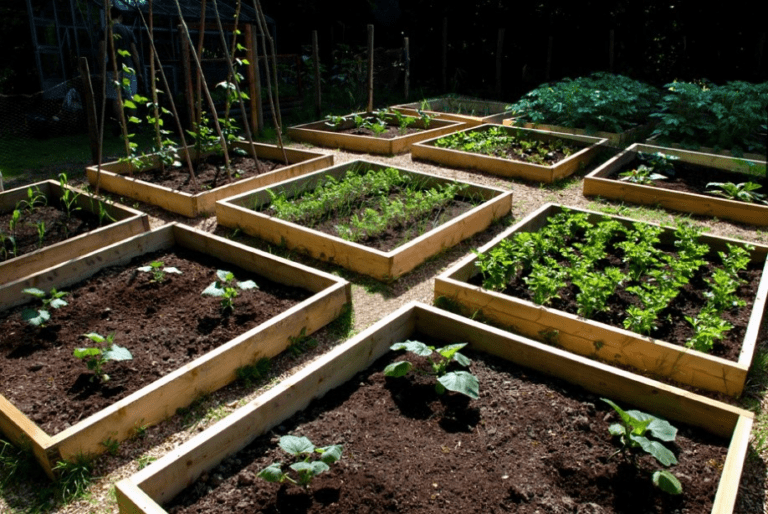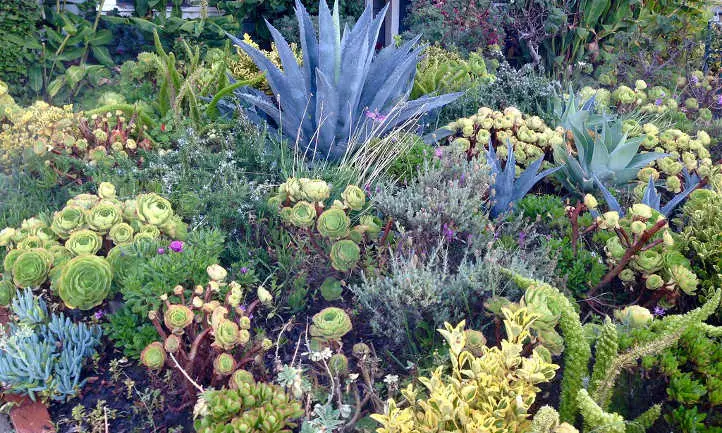Lettuce Companions: Enhancing Growth in the Garden
Table of Contents
Why Companion Planting is Important for Lettuce Growth
Companion planting is a crucial practice for lettuce growth due to the numerous benefits it offers to the overall health and well-being of the plants. By strategically choosing companion plants that complement and support each other, you can create a harmonious ecosystem that promotes optimal growth and productivity. These companion plants can help improve soil quality, attract beneficial insects for natural pest control, and provide essential nutrients to the lettuce plants. Additionally, certain companion plants can offer shade during hot summer months or protection during colder seasons, creating a more stable and nurturing environment for lettuce to thrive.

Implementing companion planting for lettuce not only enhances the growth and yield of the plants but also contributes to a more sustainable and diverse garden ecosystem. By combining different plant species that have complementary characteristics, you can create a balanced and resilient garden that is less susceptible to diseases and pest infestations. Furthermore, companion planting encourages a more natural and chemical-free approach to gardening, promoting the principles of biodiversity and ecological harmony within your garden space.
Plants That Thrive Alongside Lettuce in the Garden
When it comes to companion planting, selecting the right plants to grow alongside your lettuce can significantly benefit your garden. Some plants thrive exceptionally well alongside lettuce, creating a harmonious environment that promotes growth and health for all species involved. Among these beneficial companions are carrots, radishes, and onions. Carrots and radishes are shallow-rooting plants that complement the deeper root system of lettuce, making efficient use of the available space in the soil. Onions, with their pungent aroma, can help repel pests that may otherwise feast on tender lettuce leaves, providing a natural form of protection for your crops.
In addition to carrots, radishes, and onions, herbs such as dill, cilantro, and chives are also excellent choices for planting alongside lettuce. These herbs not only add flavor to your salads but also attract beneficial insects like ladybugs and lacewings, which feed on common lettuce pests such as aphids and caterpillars. By incorporating these companion plants into your garden, you can create a balanced ecosystem that supports the growth of your lettuce while naturally managing pests, reducing the need for chemical interventions.

How Companion Plants Help Protect Lettuce from Pests
Companion plants play a crucial role in protecting lettuce from pests by acting as natural repellents or by attracting beneficial insects that prey on harmful pests. For example, planting aromatic herbs like basil, cilantro, or mint near lettuce can help deter pests such as aphids, beetles, and caterpillars due to their strong scents that mask the odor of the lettuce, making it less appealing to pests. Additionally, certain companion plants like marigolds, nasturtiums, and dill can attract predatory insects like ladybugs, lacewings, and parasitic wasps that feed on common lettuce pests, thus helping to keep pest populations in check without the need for harmful pesticides.
Furthermore, some companion plants have allelopathic properties that release biochemicals into the soil, inhibiting the growth of pests or interfering with their ability to locate the lettuce plants. For instance, planting onions, garlic, or chives near lettuce can help repel pests like slugs, snails, and aphids, as these plants release compounds that deter these unwanted visitors. By strategically choosing companion plants that complement each other in the garden, gardeners can create a natural defense system that promotes the health and vitality of their lettuce crops while minimizing the need for chemical interventions.
This table below summarizes how some companion plants help protect lettuce from pests:
| Companion Plant | Benefit for Lettuce |
| Carrots | Carrots have deep taproots that access nutrients deep in the soil, minimizing competition with lettuce. The fragrance of carrot foliage repels pests like aphids and whiteflies, keeping them away from growing lettuce heads. |
| Onions | Onions emit strong odors that deter pests. Planting onions near lettuce helps repel aphids and other insects. Additionally, onions can provide shade for lettuce leaves, protecting them from direct sunlight. |
| Garlic | Garlic’s strong sulfur-rich fragrance confuses insects, keeping them out of your lettuce crop. Alternate rows of lettuce with rows of garlic to repel unwanted pests. Garlic is particularly effective against caterpillars that love to eat lettuce. |
| Tomatoes | Lettuce and tomatoes make a great pair. The shade provided by tomato plants benefits lettuce. |
Companion Flowers That Attract Beneficial Insects to Your Garden
Companion flowers play a pivotal role in attracting beneficial insects to your garden, aiding in natural pest control and pollination. By strategically planting certain blooms alongside your lettuce, you can create a welcoming environment for beneficial insects such as ladybugs, lacewings, and parasitic wasps. These insects are crucial for keeping harmful pests at bay and maintaining a balanced ecosystem in your garden.
Some of the best companion flowers for attracting beneficial insects to your garden include marigolds, alyssum, and cosmos. Marigolds, with their vibrant hues and strong scent, are particularly effective at luring in pest-eating insects like ladybugs and hoverflies. Alyssum, with its delicate clusters of tiny flowers, attracts a variety of beneficial insects, while cosmos provides a pollen and nectar source for pollinators such as bees and butterflies. By incorporating these companion flowers into your garden design, you can create a thriving habitat that supports the health and growth of your lettuce plants.

Using Herbs as Lettuce Companions for Enhanced Flavor
Herbs can be excellent companions for lettuce in the garden, not only for their practical benefits but also for the enhanced flavors they can impart. When strategically planted alongside lettuce, herbs can help deter pests, attract beneficial insects, and even improve the overall health of your lettuce crop.
Some herbs, such as basil, mint, and parsley, not only add a pop of flavor to your salads but also work symbiotically with lettuce plants. For example, basil emits a scent that can help repel common pests like aphids and mosquitoes, while mint can attract predatory insects that feed on garden nuisances. Additionally, herbs like parsley can provide a natural shade for lettuce during hot summer days, helping to maintain soil moisture levels and prevent wilting. By incorporating these herbs as companions, you can create a harmonious environment that not only benefits the growth of your lettuce but also enriches your culinary experience.
Below is a table that shows how herbs as lettuce companions can enhance flavor and benefit lettuce:
| Companion Herb | Benefit for Lettuce |
| Basil | Growing aromatic basil next to lettuce can improve the flavor of the lettuce. Basil also add beneficial nutrients into the soil, promoting healthy lettuce growth. |
| Dill | Dill attracts beneficial bugs like ladybugs and lacewings, which devour aphids that can harm lettuce and other plants. |
| Chives | Chives, part of onion family, help repel aphids and unwanted pests, protection tender greens. |
| Cilantro | Cilantro (coriander) does double duty by fending off unwanted insects while attracting beneficial ones. |
| Onions and Garlic | These alliums serve a dual purpose: pest deterrence and flavor enhancement. They repel pests that might harm lettuce while simultaneously improving the flavor of harvested lettuce when planted nearby. |
The Role of Nitrogen-Fixing Plants in Improving Lettuce Growth
Nitrogen-fixing plants play a crucial role in enhancing the growth of lettuce in your garden. Legumes such as peas, beans, and clover have the remarkable ability to convert nitrogen from the air into a form that can be easily absorbed by plants, a process known as nitrogen fixation. This process helps increase the nitrogen content in the soil, which is essential for the healthy growth of lettuce and other plants in your garden.
By planting nitrogen-fixing plants alongside lettuce, you can create a more sustainable and self-sufficient ecosystem in your garden. Not only do these plants improve the nutrient content of the soil, but they also reduce the need for synthetic fertilizers, thus promoting a more environmentally friendly approach to gardening. Additionally, the increased nitrogen availability can lead to improved lettuce growth, resulting in healthier and more abundant harvests for you to enjoy.
Nitrogen-fixing companion plants play a crucial role in enhancing soil fertility and supporting the growth of lettuce. Here’s a tabulated summary of their contributions:
| Companion Plant | Role of Nitrogen fixation |
| Beans | Beans have the remarkable ability to fix atmospheric nitrogen, converting it into a form that is readily available for plant uptake. This enriches the soil with nitrogen, which is essential for lettuce growth. Moreover, beans grow faster, providing vertical support for the slower-growing lettuce crops. |
| Peas | Peas and lettuce are natural companions, as they both prefer cool growing conditions. Peas also contribute to nitrogen enrichment, benefiting lettuce growth. |
Companion Vegetables That Can Be Planted with Lettuce
When planning your vegetable garden, it’s essential to consider which plants can thrive alongside lettuce to promote a healthy and harmonious ecosystem. Companion planting with vegetables can not only optimize space but also enhance the growth and flavor of your lettuce crop. Some vegetables that make great companions for lettuce include:
1. carrots: Planting carrots alongside lettuce can benefit both plants, as carrots help break up soil for better water penetration while lettuce provides shade to protect the carrot roots.
2. Radishes: Radishes make excellent companions for lettuce as they grow quickly and help deter pests like cucumber beetles and rust flies that can damage lettuce crops.
Pairing these vegetables strategically in your garden can create a symbiotic relationship that boosts overall plant health and yield. Experiment with different combinations to find what works best in your specific gardening environment.
Creating a Balanced Ecosystem in Your Garden with Lettuce Companions
When it comes to cultivating a thriving garden, incorporating a variety of lettuce companions is key to creating a balanced ecosystem that benefits all plant life. By strategically selecting companion plants that complement the growth of lettuce, gardeners can establish a harmonious environment where each plant contributes to the overall health and vitality of the garden. Planting compatible companions alongside lettuce not only enhances the aesthetics of the garden but also promotes ecological diversity, which is essential for sustainable gardening practices.
In addition to fostering a diverse and balanced ecosystem, integrating lettuce companions can also help improve soil quality and nutrient retention in the garden. Certain companion plants have the ability to replenish the soil with essential nutrients, such as nitrogen-fixing plants that enhance the overall fertility of the garden bed. By harnessing the natural symbiotic relationships between different plants, gardeners can create a self-sustaining environment that promotes optimal growth conditions for lettuce and its companion plants alike.
The table outlines how companion crops benefit the ecosystem when grown alongside lettuce:
| Companion Plant | Benefits for Lettuce |
| Radishes | Enhance overall growth and health. |
| Root Crops | Depending on the season, consider planting root crops like radish, carrot, parsnips, or beets. |
| Taller Varieties | Opt for taller flowers or vegetables to provide shade and support. |
| Aromatic Herbs | Basil, dill, and other aromatic herbs make great companions. |
| Alliums | Onions and garlic help deter pests and improve soil health. |
Companion Plants That Help Improve Soil Quality for Lettuce
In the world of gardening and plant cultivation, the concept of companion planting has gained significant attention for its ability to enhance soil quality and overall plant growth. When it comes to lettuce, selecting the right companion plants can play a crucial role in improving the soil conditions necessary for optimal lettuce development. Certain plants have symbiotic relationships with lettuce, aiding in nitrogen fixation, increasing soil nutrients, and promoting overall soil health. By strategically interplanting these companions alongside lettuce, gardeners can create a more balanced and productive ecosystem that benefits the growth and yield of their lettuce crops.
One example of a beneficial companion plant for improving soil quality for lettuce is the leguminous plant group, which includes peas, beans, and clover. These plants have the unique ability to fix nitrogen from the atmosphere into a form that is readily available for other plants, such as lettuce, to absorb and utilize. By incorporating legumes as companions to lettuce, gardeners can enhance the nitrogen content of the soil, promoting healthier growth and improved nutrient uptake in lettuce plants. Additionally, legumes can help break up compacted soil, improve soil structure, and increase overall soil fertility, creating a more hospitable environment for lettuce to thrive.
How to Plan and Layout Your Garden for Successful Lettuce Companions
When planning your garden for successful lettuce companions, it’s essential to consider the specific needs of your lettuce plants and their companion species. Begin by evaluating the space available and determining which companion plants will best suit your garden layout. For example, taller plants like tomatoes or corn can provide shade for lettuce during hot summer months, while nitrogen-fixing plants such as beans can enhance soil quality.
Once you have selected your companion plants, carefully plan their placement in the garden based on factors like sunlight requirements, water needs, and growth habits. Consider creating plant groupings that can benefit each other through mutual protection from pests or sharing of resources such as nutrients. This thoughtful layout not only promotes a harmonious ecosystem but also maximizes the overall health and productivity of your lettuce and its companion plants.
Companion Plants That Can Help Shade Lettuce During Hot Summer Months
During the scorching hot summer months, providing shade for your lettuce plants is crucial to prevent them from wilting or bolting prematurely. Certain companion plants can offer much-needed relief by casting a protective canopy over the lettuce, shielding it from the direct rays of the sun. One excellent choice for this purpose is tall and leafy sunflowers, which not only provide ample shade but also add a vibrant touch to your garden landscape. Their towering stalks and large, dense foliage create a natural umbrella that helps regulate the temperature and moisture levels around the lettuce plants, promoting optimal growth and development.
Another effective companion plant that can help shade lettuce during hot summers is corn. The tall stature and dense growth of corn plants create a microclimate that can significantly reduce the intensity of sunlight reaching the delicate lettuce leaves below. By strategically interplanting corn with your lettuce, you can harness the benefits of this natural shading technique to protect your crops from heat stress and sunburn. Additionally, the sturdy stalks of corn can act as a windbreak, further safeguarding the tender lettuce leaves from drying out in strong summer breezes.

Using Cover Crops as Lettuce Companions for Winter Protection
Cover crops are an essential component of winter protection for lettuce in the garden. These crops play a vital role in maintaining soil health and preventing erosion during the colder months when lettuce may be more vulnerable to harsh weather conditions. By planting cover crops such as winter rye, clover, or hairy vetch alongside lettuce, gardeners can help retain moisture in the soil, suppress weed growth, and enhance nutrient availability for the upcoming growing season. The dense root systems of these cover crops also contribute to improving soil structure, which benefits the overall health and growth of lettuce plants.
In addition to their soil-enhancing properties, cover crops can serve as natural barriers against pests and diseases that may threaten lettuce during the winter. Certain cover crops, such as mustards or daikon radishes, have been found to help reduce the population of harmful pathogens and nematodes in the soil, thereby safeguarding the health of lettuce plants. By incorporating a diverse mix of cover crops into the garden rotation, gardeners can create a more resilient and sustainable ecosystem that supports the long-term success of lettuce cultivation while minimizing the need for chemical interventions.
Companion Plants That Can Help Attract Pollinators to Your Lettuce
Lettuce can greatly benefit from the presence of certain companion plants that help attract essential pollinators to the garden. By incorporating flowers such as marigolds, dill, and borage near your lettuce patch, you can create a vibrant ecosystem that invites bees, butterflies, and other pollinating insects. These companion plants not only add visual interest to your garden but also play a crucial role in ensuring the successful pollination of your lettuce plants, leading to improved yields and overall health.
Diverse plantings that attract pollinators can enhance the biodiversity of your garden, promoting a well-balanced and sustainable environment. By strategically including companion plants that bloom at different times throughout the growing season, you can provide a continuous food source for pollinators, supporting their populations and increasing the likelihood of successful lettuce pollination. Additionally, attracting a variety of pollinators can contribute to the overall health and resilience of your garden, creating a dynamic and thriving ecosystem that benefits all plant life within it.The Benefits of Diversity in Your Garden with Lettuce Companions
Diversity is key when it comes to cultivating a thriving garden, especially when considering lettuce companions. By incorporating a variety of plants that complement each other, you can create a balanced ecosystem that promotes healthier growth and increased yields. Diverse plantings around your lettuce not only enhance the visual appeal of your garden but also offer numerous benefits in terms of pest control, soil enrichment, and overall plant health.
Different plants bring a range of advantages to the garden when grown alongside lettuce. For instance, some companions act as natural repellents for common pests, reducing the need for chemical interventions. Additionally, certain plant combinations work symbiotically to improve soil quality by fixing nitrogen or adding essential nutrients. Embracing diversity in your garden not only fosters a harmonious environment but also supports the overall well-being of your lettuce crop, leading to a more bountiful harvest.
Here are benefits of diversity in your garden when you pair lettuce with its companions:
| Benefit | Explanation |
| Pollination Assistance | Lettuce requires pollination to produce seeds and propagate. By planting it alongside compatible companions, such as asparagus, bush and pole beans, and nasturtiums, you encourage pollinators to visit your garden. This can enhance seed production and overall lettuce health. |
| Disease and Pest Control | Companion planting creates a more diverse and balanced growing environment. Different plants have varying natural defenses against pests and diseases. When you interplant lettuce with other species, it confuses pests and reduces the risk of widespread infestations. For instance, marigolds, chives, and radishes are known to repel certain pests and can be excellent companions for lettuce. |
| Soil Health and Nutrient Cycling | Diverse plant species contribute to soil health by varying their nutrient requirements. Lettuce companions like clover, alfalfa, and legumes fix nitrogen in the soil, enriching it for other plants. Additionally, deep-rooted companions like carrots and parsnips help break up compacted soil and improve drainage. |
| Weed Suppression | A mix of plants shades the soil, reducing weed growth. Lettuce pairs well with basil, mint, and chamomile, which not only suppress weeds but also release aromatic compounds that deter pests. |
| Biodiversity and Ecosystem Resilience | A diverse garden supports a wide range of beneficial insects, birds, and microorganisms. These organisms contribute to pollination, pest control, and overall ecosystem health. By fostering biodiversity, you create a resilient garden that can better withstand environmental changes and disturbances. |
Tips for Success with Lettuce Companions in Your Garden
When planning your garden layout for successful lettuce companions, consider the growth habits of each plant to ensure they complement rather than compete with each other. Group plants with similar watering needs together and place taller varieties where they won’t shade out smaller lettuce plants. By incorporating a variety of companion plants, you can create a balanced ecosystem that supports the growth of your lettuce while benefiting other plants in your garden as well.
In addition to selecting compatible plants, pay attention to the timing of planting and harvesting. Rotate crops yearly to prevent nutrient depletion and reduce the risk of disease build-up in the soil. Regularly monitor your garden for signs of pests or nutrient deficiencies, as early intervention can prevent problems from escalating and ensure the overall health of your lettuce and its companions.
To Know More About Lettuce Companions, Watch This Video!
Can lettuce companions help improve the taste of my lettuce?
Yes, using herbs as lettuce companions can enhance the flavor of your lettuce.
How can nitrogen-fixing plants benefit lettuce growth?
Nitrogen-fixing plants can improve soil quality by adding nitrogen to the soil, which is essential for healthy lettuce growth.
Are there any companion vegetables that can be planted with lettuce?
Yes, there are companion vegetables such as radishes, carrots, and onions that can be planted alongside lettuce.
How can cover crops be used as lettuce companions for winter protection?
Cover crops can help protect lettuce during the winter months by keeping the soil warm and providing additional nutrients.
Can companion plants help attract pollinators to my lettuce?
Yes, companion plants like flowers can attract beneficial insects and pollinators to your garden, which can help with lettuce pollination.
What are the benefits of diversity in the garden with lettuce companions?
Diversity in your garden with lettuce companions can help create a balanced ecosystem, improve soil quality, and attract a variety of beneficial insects and pollinators.






